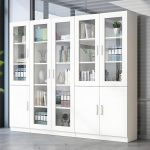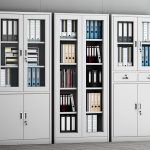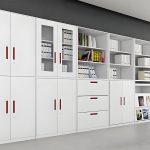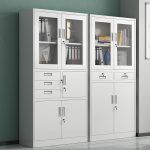A office metal filing cabinet is more than just a box for your papers; it's a critical piece of office infrastructure that impacts workflow, security, and even the look of your space. But with so many styles available - from traditional filing cabinets to versatile drawer cabinets and spacious steel cupboards - how do you pick the right one?
The key is to match the storage solution to your specific needs. Let's break down the most common styles of office metal filing cabinets and the scenarios they're best suited for.
1. The Vertical Filing Cabinet: The Space-Saving Classic
Best for: General office use, individual workspaces, and storing letter or legal-size files in a compact footprint.
What it is: This is the tall, narrow cabinet you picture when you think of a traditional file cabinet. Drawers are stacked vertically and designed specifically for hanging folders.
Why Choose It:
- Space Efficiency: It takes up minimal floor space, making it ideal for smaller offices or tight corners
- High Capacity: Despite its footprint, it offers significant storage for hanging files
- Specialized Design: Optimized for document management with built-in hanging rails
Considerations: Limited to file storage only; not suitable for bulkier items.
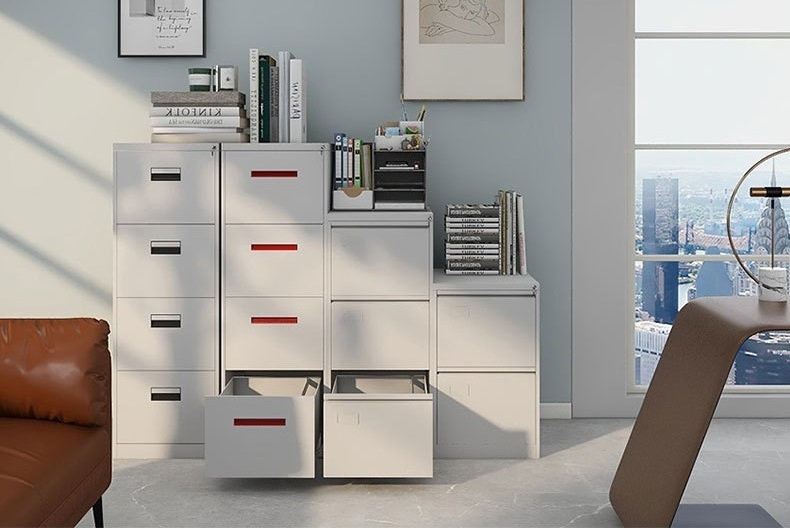
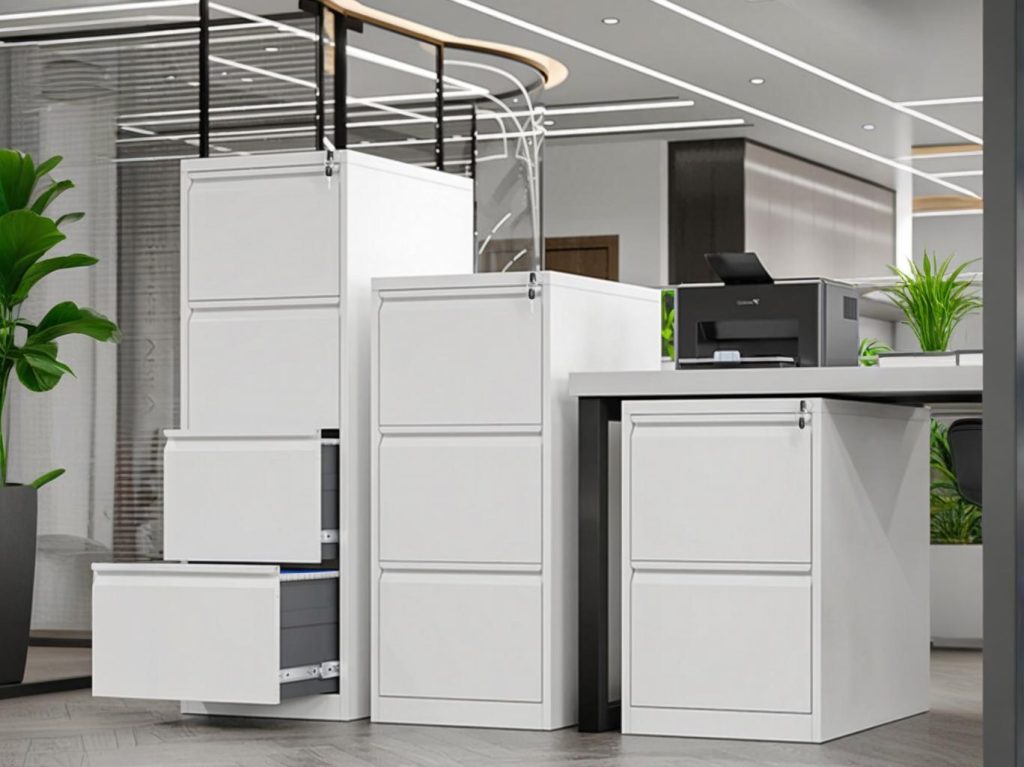
2. The Lateral Filing Cabinet: The Modern & Accessible Choice
Best for: Shared spaces, open-plan offices, and storing a wide variety of items beyond just files.
What it is: A wider, lower cabinet where drawers extend from side to side. They are often wider than they are tall and can accommodate both files and other items.
Why Choose It:
- Superior Accessibility: Wider drawers allow you to see all files at a glance
- Versatile Storage: Can be configured for files, shelves, or a combination of both
- Worksurface Potential: The flat top often doubles as additional counter space
Considerations: Requires more wall space than vertical cabinets.
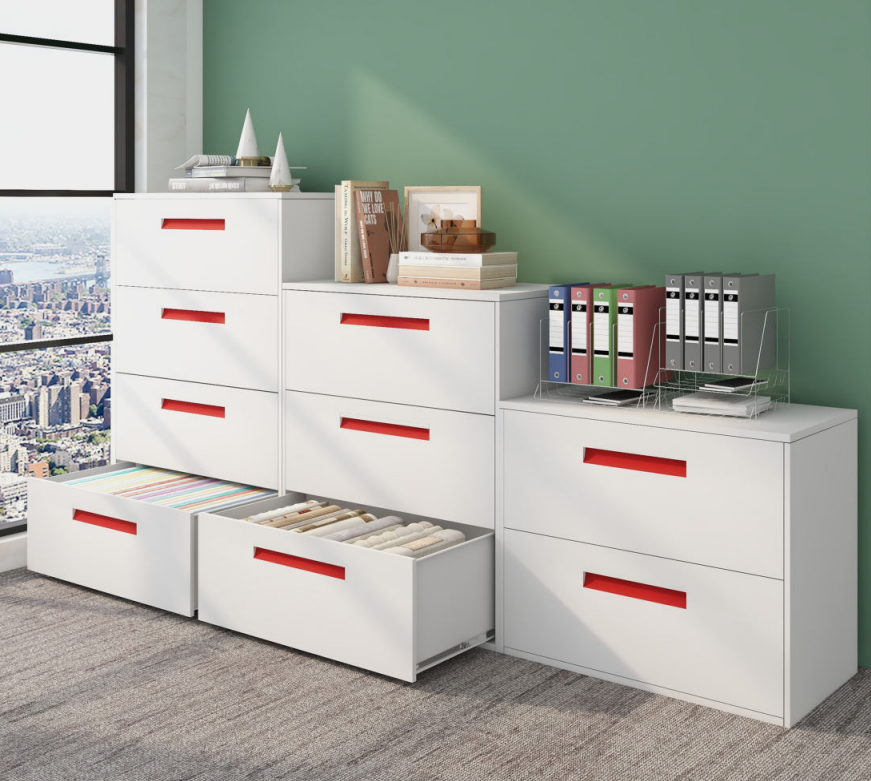
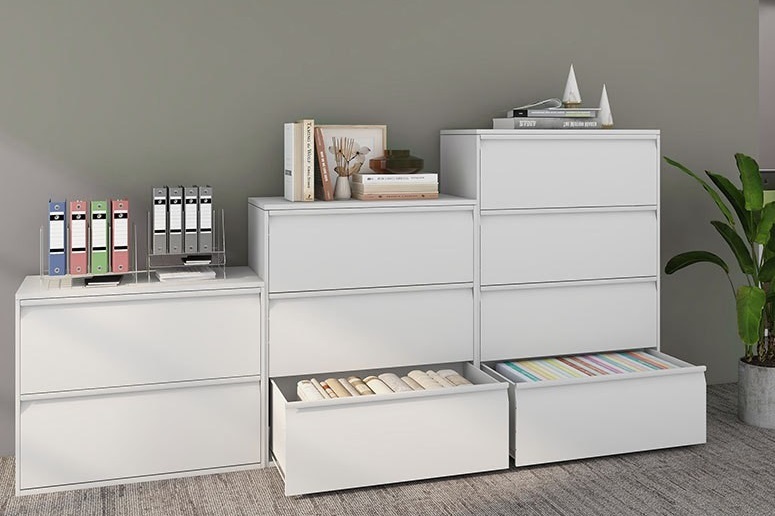
3. The Classic Filing Cabinet: The Organized Specialist
Best for: Offices, businesses, and government agencies that need to manage a large volume of documents and files.
What it is: A sleek and functional file cabinet, typically featuring multiple drawers or compartments, specifically designed for storing files, documents, contracts, and other paper materials.
Why Choose It:
- Efficient Organization: Multi-level design helps categorize and separate documents, keeping your workspace neat and organized.
- Secure Storage: Available with lockable options to ensure the safety of important files and prevent unauthorized access.
- Durability: Made from high-quality metal, ensuring long-lasting durability and resistance to wear in busy office environments.
- Space-Saving: Compact design fits various office sizes, optimizing valuable office space.
Considerations: Not suitable for storing large items such as oversized artwork or large equipment.
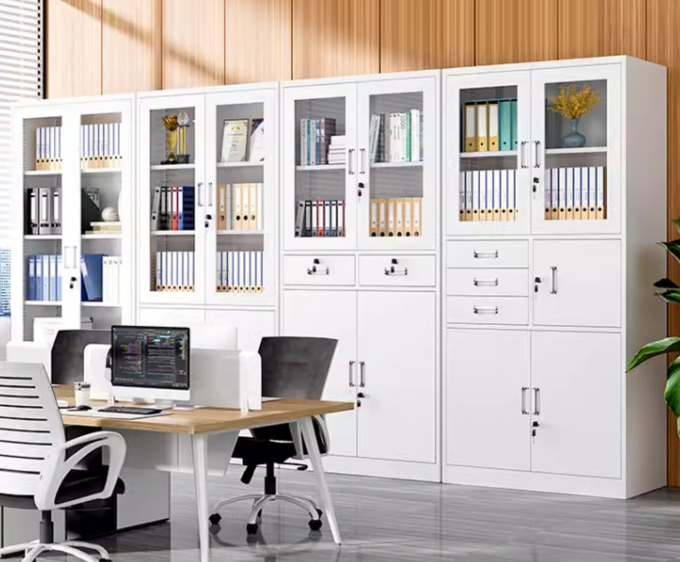
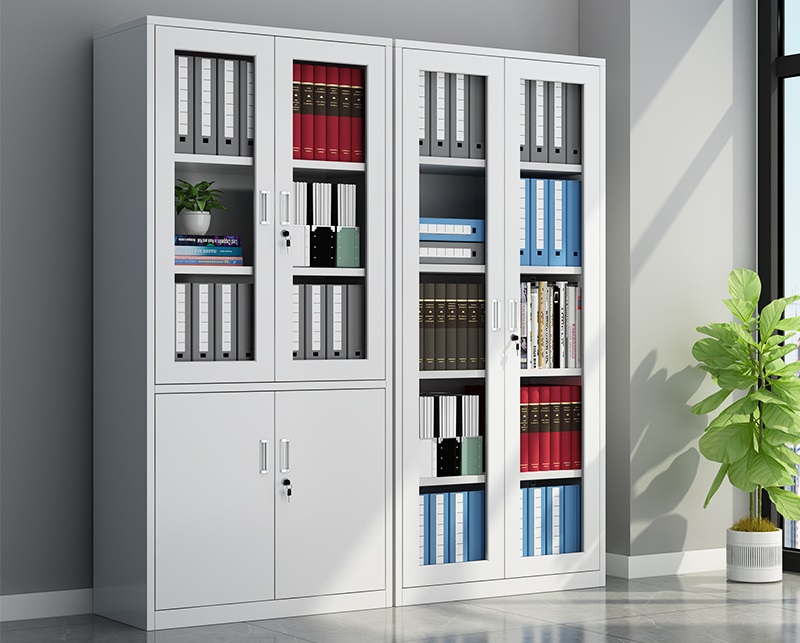
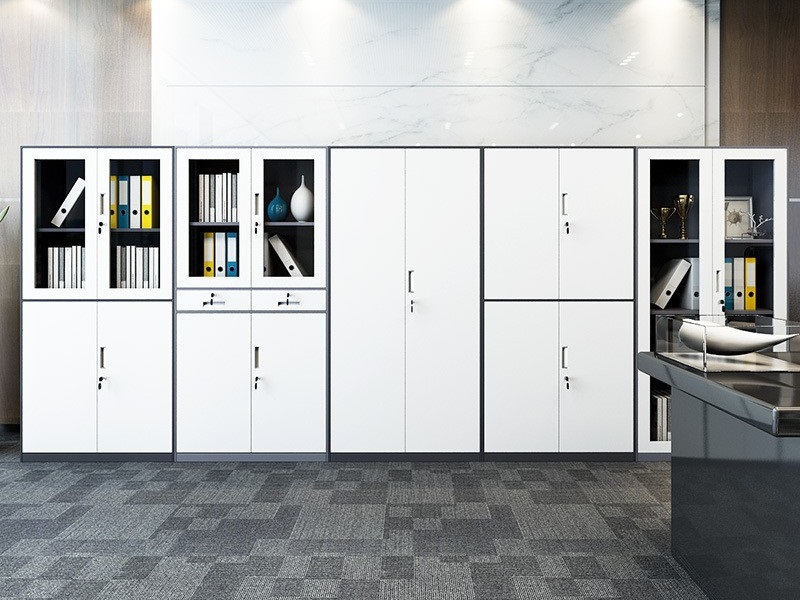
4. The Steel Cupboard: The Versatile Workhorse
Best for: Bulk storage, supply rooms, IT equipment, and archival storage.
What it is: A tall cabinet with one or more shelves behind a locking door, functioning like a metal closet.
Why Choose It:
- Maximum Flexibility: Open shelving accommodates items of various sizes
- High Weight Capacity: Can store heavy equipment and bulk supplies
- Full Visibility: Easy to see and access everything inside when opened
Considerations: Less organized than drawer-based systems for small items.
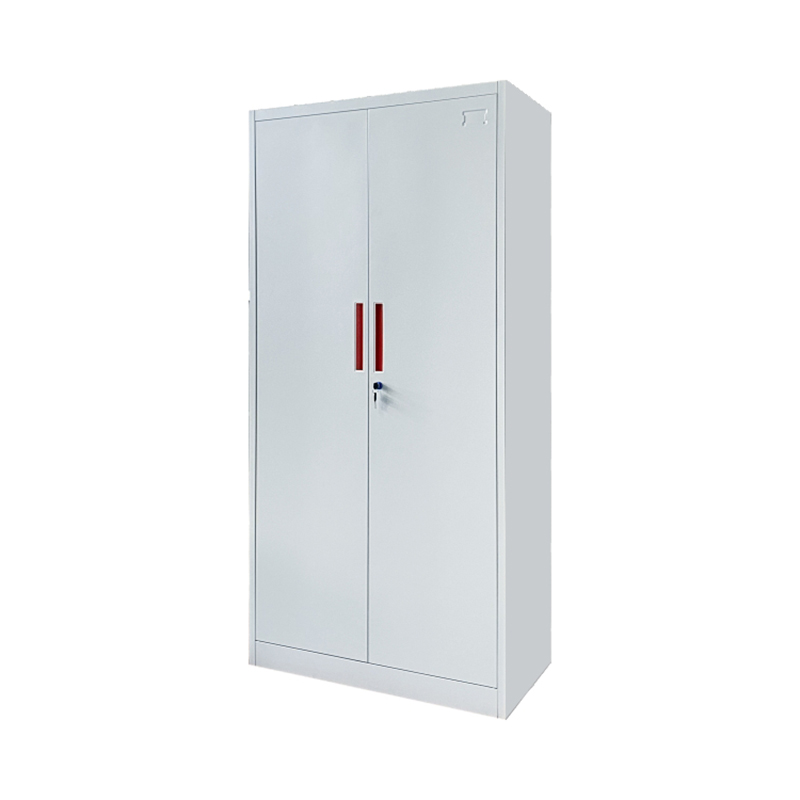
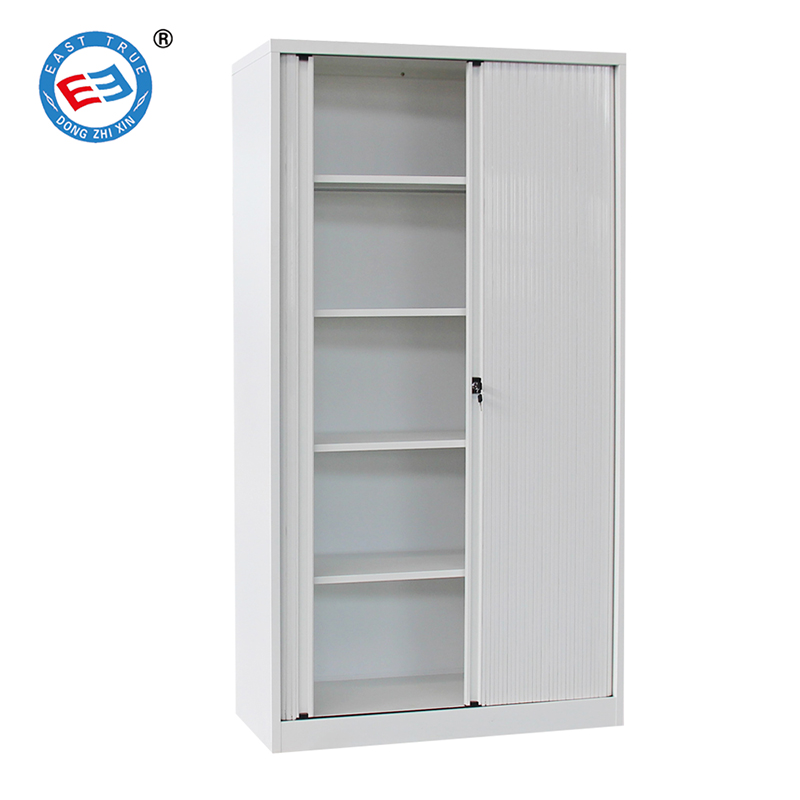
5. The Mobile Pedestal: The Flexible & Personal Assistant
Best for: Personal use under a desk, shared workstations, and adding storage without committing to a large piece of furniture.
What it is: A small, short filing cabinet (typically 2-drawers) on casters, designed to fit neatly under a desk.
Why Choose It:
- Ultimate Flexibility: Roll it to wherever it's needed
- Personal Security: Provides individual employees with locked storage
- Space-Saving: Tucks away neatly under worksurfaces
Considerations: Limited storage capacity compared to full-size units.
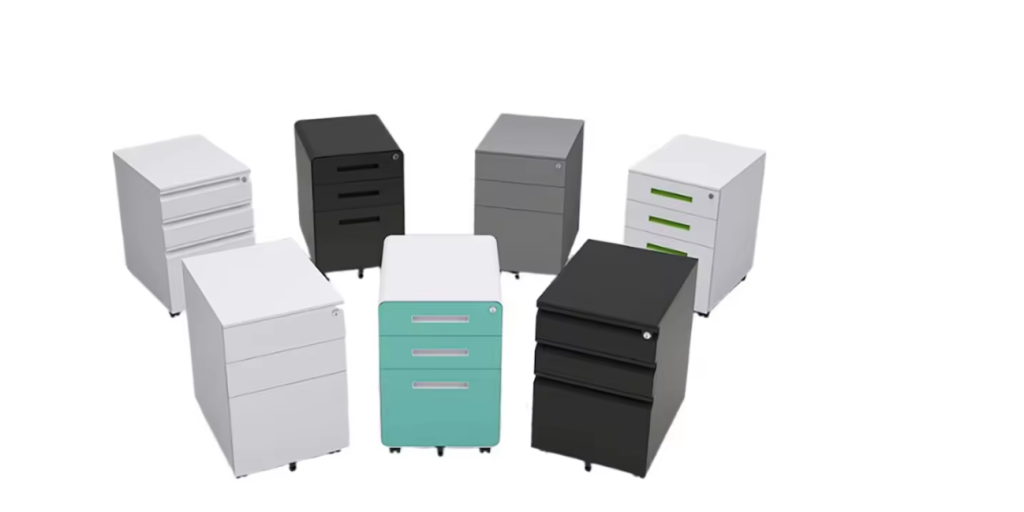
6. The Stackable/Shelf File: The Modular & Cost-Effective Solution
Best for: Archives, warehouses, budget-conscious startups, and environments where storage needs may change.
What it is: Individual units (drawers or small cabinets) that can be stacked on top of one another, often secured with a locking rod.
Why Choose It:
- Modularity: Start with few units and add more as needed
- Affordability: More cost-effective than single, large built-in cabinets
- Configurability: Create custom storage that fits your exact space
Considerations: Requires proper securing for stability.
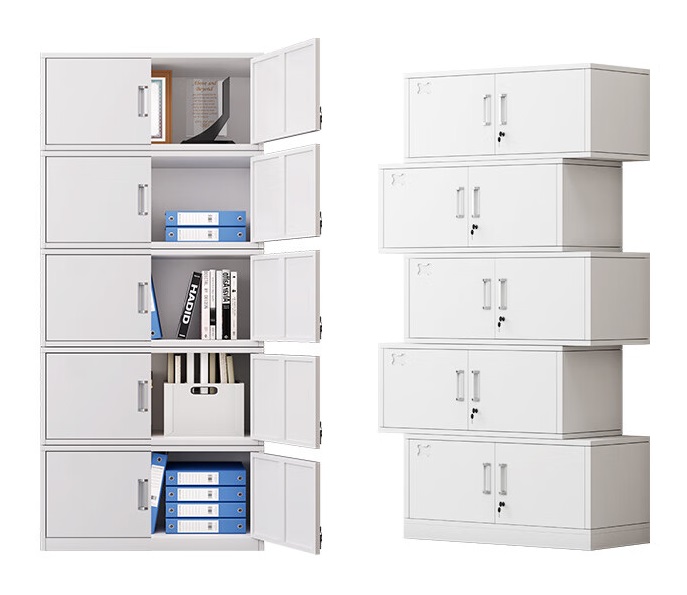
Your Decision Checklist: Finding Your Perfect Match
To choose the right style, ask yourself these key questions:
What am I storing?
- Mostly letter/legal files? → A Vertical Filing Cabinet
- Small parts and tools? → A Mobile Cabinet
- Bulky equipment and supplies? → A Steel Cupboard
- Mixed items including files? → A Lateral Cabinet
How much space do I have?
- Limited floor space? → A Vertical cabinet
- Need under-desk storage? → A Mobile Pedestal
- Plenty of wall space? → A Classic Filing Cabinet or Steel Cupboard
What's my primary need?
- Document management? → Classic Filing Cabinet
- Small parts organization? → Drawer Cabinet
- Equipment protection? → Steel Cupboard
- Personal storage? → Mobile Pedestal
What's my budget and growth plan?
- Need a low-cost, scalable option? → Stackable units
- Investing in long-term storage? → High-quality Steel Cupboard or Classic Filing Cabinet
Conclusion
Understanding the distinct advantages of each storage style - from specialized filing cabinets to versatile drawer cabinets and spacious steel cupboards - ensures you select a solution that genuinely enhances your organization and workflow. The right choice depends on what you need to store, how much space you have, and how you need to access your items.


